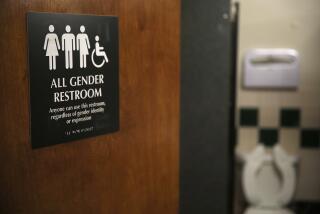Brains of women with autism show masculine traits

Do women who are on the autism spectrum have brains that are more “masculine”?
A team of researchers at Cambridge University’s Autism Research Center has found striking similarities between the structural anomalies found in the brains of women with autism spectrum disorder and neurobiological characteristics known to be different between males and females in general.
The results, published online Thursday in the review Brain, partially confirm aspects of an “extreme male brain” theory of autism put forth by Cambridge neuroscientist Simon Baron-Cohen and his colleagues. But other results of the study appeared to shake the theory -- scans of the brains of men with autism didn’t exhibit a discernible “extreme” of masculine architecture.
At the least, the study adds significant evidence that there are fundamental differences between the brains of women with autism and those of their male counterparts, and highlights the need to include more women in studies. Although males are disproportionately represented in the population of autistics by a ratio of 2:1 or 3:1, the gender disparity in research samples hovers closer to 8:1, according to the study authors.
“What we have known about autism to date is mainly male-biased,” said Cambridge neuroscientist Meng-Chuan Lai, who led the research project. “We should not blindly assume that everything found for males or from male-predominant mixed samples will apply to females.”
Lai said future research should restore balance and include more rigorous cross-comparisons between males and females. “Both the clinical and research communities need to pay more attention to females ‘on the spectrum’” of autism, he said.
The Cambridge study was the largest sampling to date of high-functioning adults with autism using magnetic resonance imaging. The researchers mapped structural differences among the brains of women and men who were diagnosed with autism spectrum disorder, and compared the scans with those of typically developing peers.
Finding measurable neurobiological differences between male and female brains is no longer surprising to researchers, although debate lingers over whether these characteristics spring from innate neurobiology or the sculpting and pruning that comes with experience. Men’s brains are bigger across body sizes, for example, but women have a higher proportion of white matter, which facilitates connections among brain regions. Studies also have shown a strong sexual divide in brain function, such as cognition and memory. (IQ gaps are negligible; men’s scores have a more scattered distribution.)
The so-called sexual dimorphism in brain structure has been found in previous studies of autism: females with autism differ from men in cognition, in genetic and hormonal biochemistry, and in early brain over-growth, among other phenomena. Several studies have highlighted more “typically male” behavior and physiology among women with autism.
The Cambridge researchers found the sharpest distinction when measuring the volume of white matter: For the women diagnosed with autism, scans showed that areas associated most with autism closely mimicked a male pattern of white matter volume. Differences in gray matter were more marginal.
Other researchers found the results intriguing but cautioned about limits, some of which the team acknowledged.
The sample only included high-functioning subjects with no other neurological disorders, so its results may not apply broadly. And the lack of evidence pointing toward an “extreme” masculine architecture among the male autistics could indicate that there are subtle differences in the way sex-chromosome or hormonal factors play out in the early development of males and females. Ordinary male brains also could be so far on the “masculine” side of the scale that it’s hard to discern marginal differences in autistic males.
Jeffrey Anderson, a University of Utah neuro-radiologist who has scanned the brain of Temple Grandin, an animal behavioral biologist and autism advocate, worried that the scans could be picking up “noise” related to sexual differences in the size of cranio-facial blood vessels.
“It’s a little disconcerting that the male-female differences are all clustered around the venous sinuses,” Anderson said. Nonetheless, the differences relating to white matter between the female autism and control groups “are pretty convincing and seem to line up pretty well” with known differences between men and women, Anderson added.







